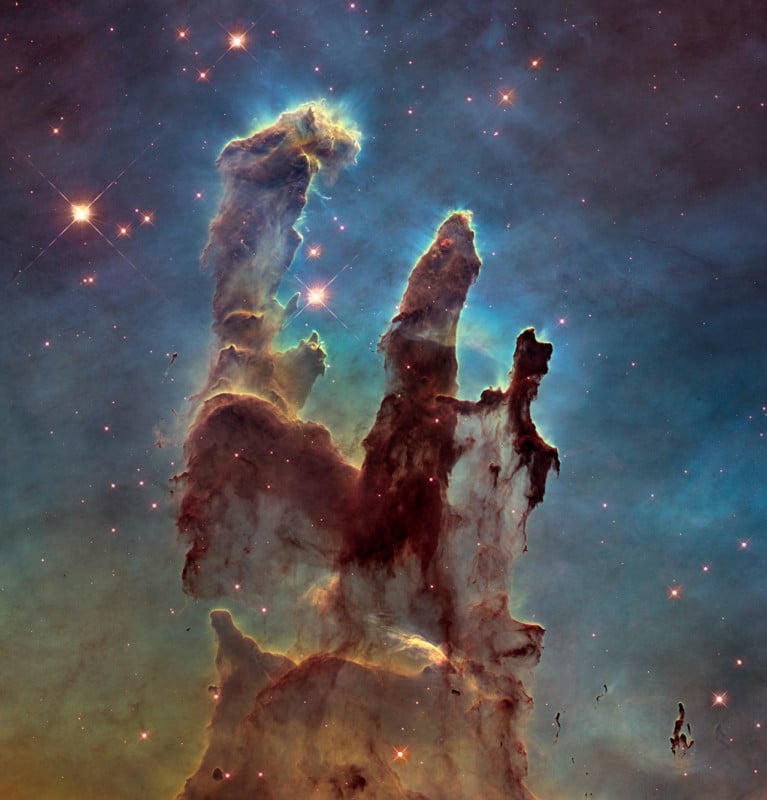James Webb Captures Incredible 122MP Photo of the Pillars of Creation
![]()
The James Webb Space Telescope (JWST or Webb) has captured a massive and stunningly detailed photo of the Pillars of Creation, a celestial region that gives birth to new stars.
The 122-megapixel photo was captured by Webb’s Near-Infrared Camera (NIRCam) and is a close-up view of a subset of the Eagle Nebula, which lies 6,500 light-years away from Earth.
This particular region was first captured by the Hubble Space Telescope in 1995 (and again in 2014). The European Space Agency (ESA) says that it is a popular subject and not only has it been imaged by Hubble, but also by other world-class observatories like the Herschel Telescope.
Webb’s imaging system is the most advanced that has ever captured the Pillars of Creation — significantly more advanced than that of Hubble — and the image it has created will help researchers update their models of star formation because they are now able to see more precise details of star populations as well as the amount of gas and dust in the region.
![]()
For reference, below is the photo of the Pillars of Creation that Hubble captured in 2014:

“The three-dimensional pillars look like majestic rock formations, but are far more permeable. These columns are made up of cool interstellar gas and dust that appear — at times — semi-transparent in near-infrared light,” the ESA explains.
Newly formed “protostars” are described as “scene stealers” by the ESA, and are the bright red orbs that typically have the diffraction spikes and lie outside one of the pillars.
“When knots with sufficient mass form within the pillars of gas and dust, they begin to collapse under their own gravity, slowly heat up, and eventually form new stars,” the ESA adds.
“What about those wavy lines that look like lava? These are ejections from stars that are still forming within the gas and dust. Young stars periodically shoot out jets that collide with clouds of material, like these thick pillars. This sometimes also results in bow shocks, which can form wavy patterns like a boat does as it moves through water. The crimson glow comes from the energetic hydrogen molecules that result from jets and shocks. This is evident in the second and third pillars from the top – the NIRCam image is practically pulsing with their activity. These young stars are estimated to be only a few hundred thousand years old.”
The ESA notes that while it might appears as though Webb’s near-infrared photo is able to pierce through the clouds to reveal cosmic entities beyond the Pillars of Creation, there are no galaxies in this view.
“Instead, a mix of translucent gas and dust known as the interstellar medium stands in the way. It blocks our view of the deeper universe – and is lit up by the collective light from the packed “party” of stars in the region,” the ESA explains.
Image credits: NASA, ESA, CSA, STScI; J. DePasquale, A. Koekemoer, A. Pagan (STScI).